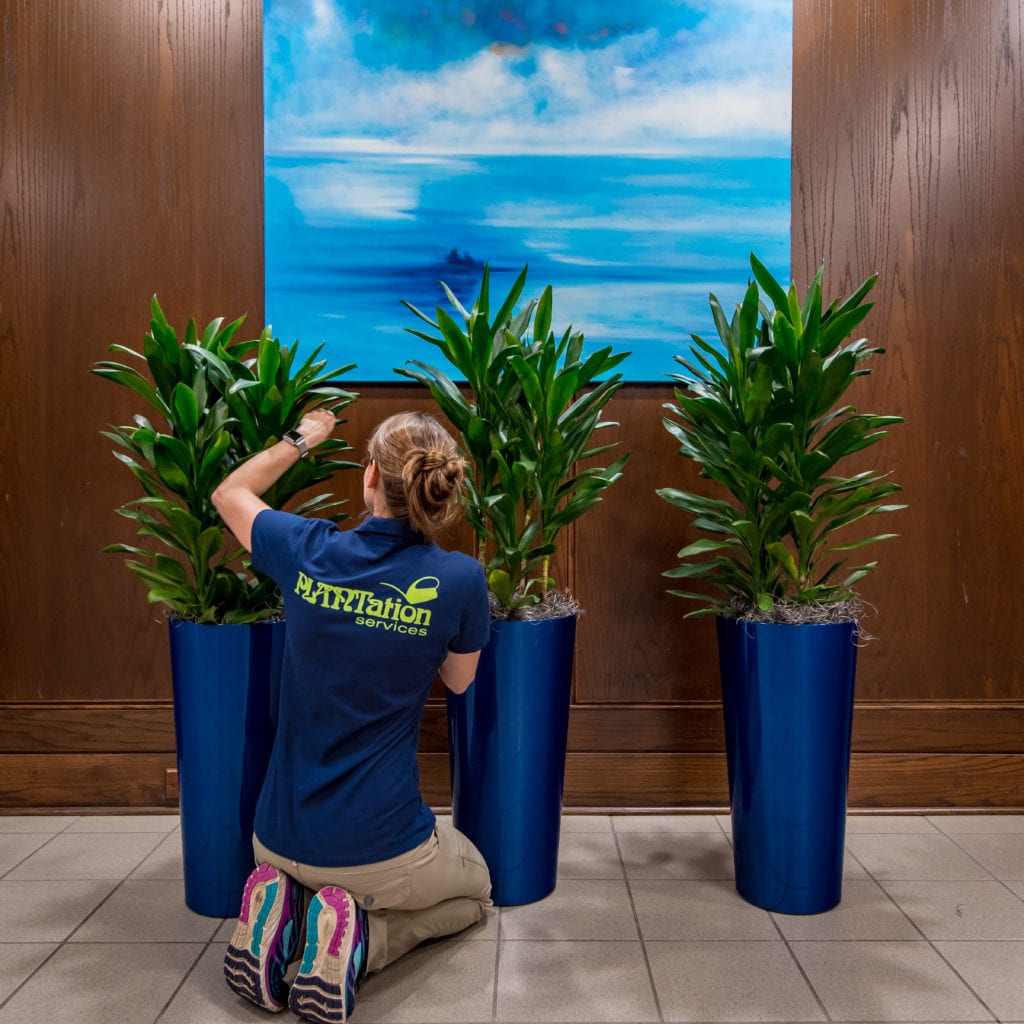The highly-anticipated time of year is barreling towards us, and we are donning our comfy sweaters and long socks to adapt to the colder temperatures. The plants outside are similarly changing themselves as we witness their leaves turn to orange and red. Your houseplants will respond to the season as well, and here are a few tips to keep them happy and healthy throughout the cold weather.
1. Bring Plants Indoors – If you’re one of the many people who let their plants enjoy the summer weather out on the porch or yard, fall is the time to bring them back into the house. Once the nights start reaching below 50 degrees, your plants are at risk of receiving cold damage. Plants can also go into shock if they experience quick temperature changes. Bringing them indoors during fall and will ease their transition.

2. Protect Plants from Cold Damage Inside – Often providing the most light, houseplants commonly are set on a window sill. If possible, move the plant away from the window so that the foliage is not touching the cold surface of the window. This will prevent any cold damage to the leaves from happening. Finding a new spot under a lamp or overhead light for your plant baby may be advantageous as the average daytime hours shrink. If your plants do experience cold damage, the leaf will appear black in spots the cold has affected it. Just simply remove those leaves that show the damage. It’s not necessarily a death sentence to your plant.
3. Expect to See Changes – Kind of like a bear hibernating, plants take a growth break during winter. This is most simply because it’s not getting enough light to grow, only to maintain. Don’t be alarmed if your green plant suddenly has a few yellow leaves–some species will thin themselves out to prepare. Provide ample light and water correctly and your little green friends will winter well.
4. Take a Break from Fertilizing – Fertilizer is most helpful in the summer when the plant is taking in long hours of sunlight and is at its peak season of growth. However, in the winter the plant will not use these extra nutrients during the short days. Halt fertilizing until Spring.
5. Adjust Your Watering to What the Plant Needs – The shorter days and lower temperatures as well as the adjustment to their new home if you are bringing your plants indoors will all be a lot for your plants to adjust to. Your normal water routine will be too much for them during all the changes. To avoid overwatering and causing root rot, check the soil and make sure it’s dry and ready for a drink before watering. Depending on the plant type or house temperatures, it may need to wait an extra week or more to dry down the way it did during the summer.

6. Supplement Humidity – As we turn on our home heaters and fill the rooms with warmth, it also decreases the average humidity in the house. The crisp, dry air can really affect our green houseguests. First, try to keep them away from drafts and direct line of heating vents. You can also help your plants out by placing them in rooms of higher humidity, like the bathroom, or perhaps positioning them close to your humidifier. Grouping your plants together is another simple way to let your plants help each other as they naturally give off moisture from their leaves.
By enacting a few simple changes, you can give your houseplants an easier winter experience! Want to keep your indoor space green year-round? Call us today to get a free quote to bring life your space!
Looking for more fall plant advise? Check out our friend Janet Carson’s blog to see her picks for the garden.
